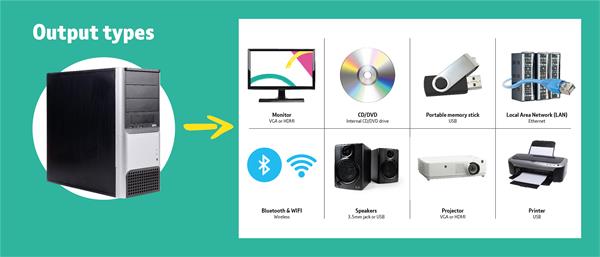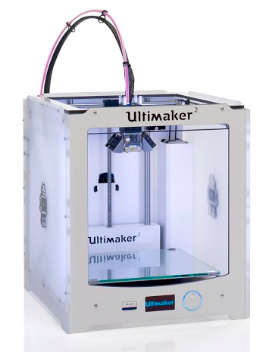What are outputs?
Output is data or information communicated from a computer system to the outside world via various devices which include:
- monitor screens
- LAN connections
- memory sticks
- CD or DVD drives
- printers
- speakers
- projectors

Some output devices are built in; others are plugged in or wirelessly connected. Much ‘real world’ information is analogue in its nature. However, computer systems work with digital data, so it’s necessary that this be converted to analogue format as it’s outputted.
Motors, buzzers and lights are other examples of output devices, such as those featured in programmable toys like the Bee-Bot, Roamer®, Big Track, Finch and mOway. Some of these toys are programmed using built-in keys, whilst others are programmed remotely using programming-languages; perhaps Scratch or something product-specific.

The motor in programmable toys such as the Bee-Bot is an output device.
Why are outputs important?
Many programs control physical systems such as ATM cashpoints, printers, washing machines, manufacturing robots, fairground rides and components within cars and aircraft. This is achieved by outputting, from a computer system, instructions which operate motors, alarms, lights and other physical devices. Were it not for output devices, computers would be unable to have any control over systems in our physical environment. We’d be unable to access any data being processed or stored within a computer system. This would not only mean we couldn’t view or print files or listen to audio recordings contained within it; we’d be prevented from being able to use the computer at all, since we wouldn’t be able to navigate around its operating system or application software.
Augmented reality is an exciting, developing technology whereby a computer system overlays information onto a direct view of the world around us. This is achieved in several ways, all of which use various output devices. A screen might display both the output of a camera and the information to be overlaid. 3D printers are an innovative form of output device which allow the creation of three-dimensional models, building up layers of plastic. They enable the rapid prototyping of products and are becoming widely used in a range of manufacturing industries. Computer-aided design (CAD) software running on a computer system provides the user with an environment in which they can design the models to be printed.

A 3D printer used for prototyping.